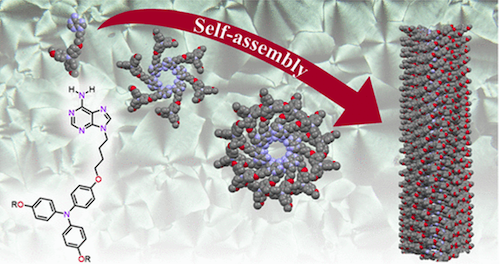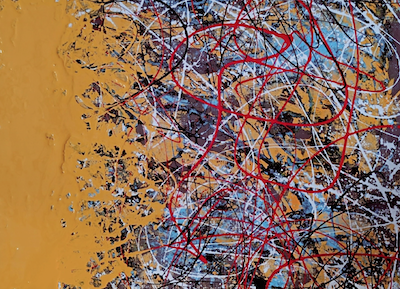New supramolecular chemistry with adenine, one of the nitrogenous bases forming part of DNA and RNA
Researchers from the Liquid Crystals and Polymers Group at the Institute of Nanoscience and Materials of Aragon (CSIC-UNIZAR) in collaboration with researchers from the University of the Basque Country, the University of Jaen and the University of Calabria (Italy) have unveiled a new organisation for adenine molecules in the form of cyclic hexameric structures called rosettes. The rosettes in turn are stacked to form helical columns that are organised into hexagonal phases. This finding is of great interest for the development of chiral nanostructures and complex systems that can also express other functions encoded in the molecules, simply by self-assembly of the molecules.
“Unveiling adenine H-bonded hexads: Hierarchical self-assembly for helical columnar functional materials”
Alejandro Martínez-Bueno, Génesis M. Valencia-Vásconez, Roberto Termine, Attilio Golemme, Josu Ortega, César L. Folcia, José M. Granadino-Roldán, Amparo Navarro, Raquel Giménez, Teresa Sierra
Accepted: 18th June 2025
DOI: https://doi.org/10.1021/jacsau.5c00256
Abstract:
This manuscript reports on an unusual self-assembly of small adenine-based molecules leading to complex, functional systems. Molecules feature an adenine nucleobase substituted at the N9 position with a triarylamine unit through a flexible spacer. Hydrogen bonding interactions prompt the formation of unprecedented adenine hexameric rosettes, which organize in dimers and then into helical columnar assemblies exhibiting hexagonal columnar liquid crystal phases, even with nonchiral molecules. Theoretical calculations including geometry optimization and prediction of vibrational modes have provided essential insight into the configuration of hydrogen bonds between adenine units to form stable hexads, and experimental and simulated X-ray diffraction (XRD) patterns are consistent with the unique helical self-assembly. Furthermore, molecular design including chirality in the flexible spacer and triarylamine electron-donor units steers these nanostructured materials toward functionalities related to the control of supramolecular chirality and semiconductivity. This is confirmed by thin film circular dichroism measurements for chirality and the space charge-limited current method for hole










